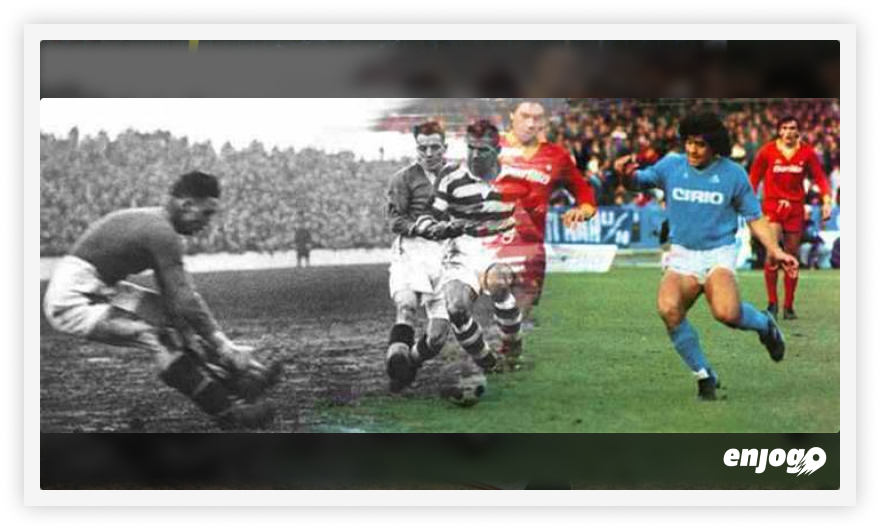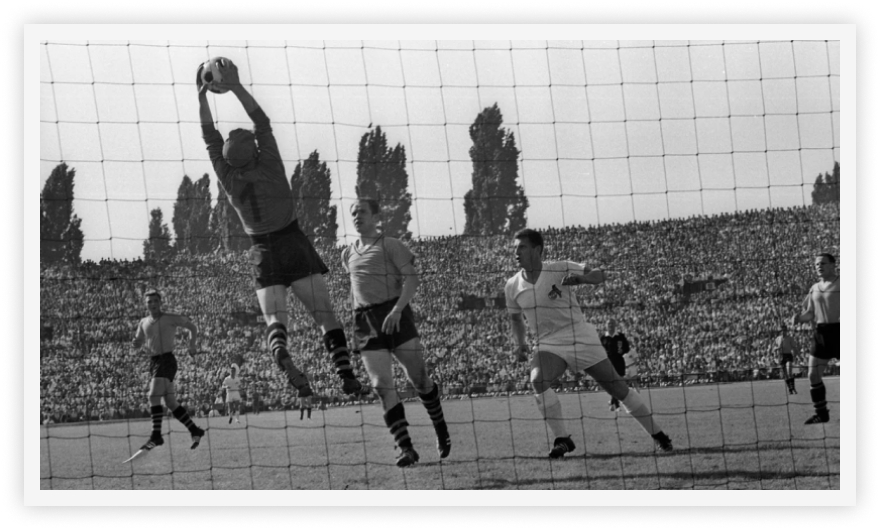Explained: What is the History of Football (Soccer)
Football is a unique tool to unite people. Since the last two centuries, the game’s appeal across the globe has been phenomenal. There have been several instances historically where the game played a key role in shaping society. In the last few decades, football has transformed from a leisure activity on the local fields to a global phenomenon transcending cultural, economic and social boundaries. Today, football is a billion-dollar industry influencing fashion, retail, technology, media, and politics, all while retaining its essence of bringing joy to people.

Britain’s Gift to the World: The Ancient History of Football
The history of football game traces back to the Middle Ages. The earliest forms were played in Britain, fundamentally treated as a leisure activity and pastime with zero to very few set rules. The game was played among known people in different neighbourhoods. By the early 19th century, football found its place in an organized environment. It was introduced in schools and universities. Gradually, rules were introduced. The history of football (soccer) started shaping up to become a formal sport.
The Football Association (FA) in England became the turning point in the history of football. In 1863, the official governing body of football was formed. It laid the foundation for the football rules as we know it today. What started as a fun pastime for labourers and workers now had set rules for disruption. By the late 19th century, professional leagues emerged across Britain, targeting talented players and enthusiastic spectators.
Scripting the History of Football: Formation of FIFA

As football started gaining mass appeal, the need for a global regulatory body became evident. In 1904, the Federation Internationale de Football Association (FIFA) was incepted in Paris, France, to oversee international competitions and promote the game worldwide. Initially, FIFA comprised seven European countries, and FIFA’s membership quickly expanded, reflecting football’s growing reach.
Over the decades, FIFA has set the benchmark for regulating the game and organizing landmark events, including the inaugural FIFA World Cup in 1930, which brought nations together to celebrate sports and culture. The first edition was won by Uruguay, a South American country that has been a steady powerhouse in the ancient history of football. Since then, the FIFA World Cup has become the most prestigious global tournament. In every edition, the FIFA World Cup attracts billions of viewers worldwide and fosters a sense of unity amongst cultures and traditions. FIFA has also established several other tournaments, which include the FIFA Women’s World Cup and youth competitions, broadening the sport’s mass appeal.
Further, FIFA led the formation of continental associations – UEFA (Europe), CONMEBOL (South America), AFC (Asia), CAF (Africa), and CONCACAF (North and Central America). These associations were formed to manage football’s development on a continental scale. UEFA’s Champions League, for instance, has become one of the most-watched and lucrative television properties globally, showcasing the best talent in football. Similarly, CONMEBOL’s Copa Libertadores highlights South America’s passion for the game.
FIFA now boasts a 200-member national association team. Each association has contributed to the history of football and works to develop football from the grassroots and professional level with their countries, ensuring that the game remains accessible and inclusive for the masses. FIFA has also undertaken initiatives to restrict pressing issues like corruption via match-fixing, inequality and doping. Programs like FIFA Forward aim to support developing nations in building infrastructure, training coaches, and promoting the role of gender equality in the game.
FIFA’s challenges, including governance controversies and financial scandals, have overshadowed its achievements. However, its role in shaping modern football from the grassroots to the elite level has been instrumental. Through its leadership and partnerships, FIFA continues to rewrite the ancient history of football.
History of Football in India: From A Leisure Activity for Britishers to Building a Legacy
British soldiers and civil servants introduced football to India. It made its way during the British Raj during the late 19th century. By the late 19th century, the game began to take shape, starting in Calcutta (now Kolkata), which became the epicentre of growing the sport. British army regiments often played matches between themselves, gradually inspiring local interest in the sport.
The formation of clubs like Mohun Bagan in 1889, East Bengal in 1920, and Mohammedan Sporting in 1891 marked the beginning of organized football development in the country and a special chapter in the history of Indian football started. Mohun Bagan, in particular, holds a special place in the hearts of Indian football fans. In 1911, the club’s history in the IFA Shield, defeating the British East Yorkshire Regiment, became a symbolic moment of resistance against colonial rule. This triumph resonated across India, highlighting football as a platform for the nation’s pride.
During this period, local tournaments like the Durand Cup (established in 1888) and the Rovers Cup (started in 1891) started gaining prominence, further taking the game forward in the country.
These competitions attracted teams from different parts of the country and provided a stage for Indian players to showcase their talent. The Indian clubs in these tournaments laid the foundation for a football culture that continues to thrive in certain regions.
In the early 20th century, football became an integral part of life in Bengal and other parts of India – especially among the working-class communities. It also served as a unifying force, bringing people from different socio-economic backgrounds together on the pitch and in the stands. This legacy continues to influence Indian football culture today.
The Rise of Indian Football
Post-independence, Indian football saw phased growth with the establishment of the All India Football Federation (AIFF) in 1937. The AIFF became the governing body responsible for promoting and managing the sport globally. India’s achievements in football were notable, including a gold medal in the 1951 Asian Games and a fourth-place finish in the 1956 Melbourne Olympics, showcasing the potential of Indian players on the international stage.
The introduction of the National Football League (NFL) in 1996 was a significant milestone in Indian football. It aimed to provide a professional structure and encourage competitive play among the country’s best teams. However, the league faced numerous challenges, including poor infrastructure, inconsistent management, and limited viewership. Despite these issues, the NFL laid the groundwork for future developments in Indian football.
In 2007, the NFL rebranded to become the I-League, the nation’s top-tier competition. The competition marked a significant milestone for Indian football. The NFL aimed to provide a professional structure and encourage competitive play among the country’s best teams. However, the league faced numerous challenges, including poor infrastructure, inconsistent management, and limited viewership. Despite these issues, the NFL laid the groundwork for future developments in Indian football.
The NFL rebranding to I-League was planned in a phased manner to grow football in India and further professionalize it. Clubs like Bengaluru FC, Dempo SC, and Churchill Brothers emerged as dominant forces, contributing to the league’s competitive spirit. However, the I-League struggled to attract mainstream attention and investment, as cricket continued to dominate India’s sporting landscape and shape the ancient history of football (soccer) in India.
The launch of the Indian Super League (ISL) in 2014 marked a transformative moment in Indian football. With its franchise-based model, international partnerships, and high production values, the ISL brought unprecedented visibility to the sport. Celebrities and business tycoons invested in teams, while international stars joined as marquee players, elevating the league’s profile. The league also introduced innovative marketing strategies, attracting younger audiences and creating a vibrant football culture in urban centers.
In addition to professional leagues, grassroots initiatives have played a crucial role in shaping Indian football. Programs like the Reliance Foundation Young Champs and the AIFF’s Baby Leagues help identifying and nurturing young talent. Collaborations with international academies have further enhanced the quality of coaching and player development in the country.
Despite these advancements, Indian football continues to face challenges. The national team’s FIFA ranking remains low, reflecting the demand for sustained investment in player development, infrastructure and competitive exposure. The lack of robust football culture outside traditional strongholds like West Bengal, Kerala, and Goa further contributes to the challenges in the sport’s nationwide appeal.
Efforts to address these issues are ongoing, with initiatives like the Khelo India program and partnerships with global organizations showing promise. As Indian football navigates its complex journey, the dream of seeing the country compete on the global stage remains a driving force for players, fans and stakeholders alike.
Conclusion
The history of football game from local fields to global arenas has been nothing short of revolutionary. It is a testament to its universal appeal and transformative power. Football is a force that unites people, fosters community spirit, and inspires dreams. As the sport continues its growth journey, the power of its global revolution remains unparalleled. In India and globally, football provides an inclusive platform for all to learn, grow and cherish a healthy form of living.
Frequently Asked Questions
Where did football originate?
Football originated in Britain during the Middle Ages, evolving from informal village games to structured sports with standardised rules in the 19th Century.
What is the history of football?
Football’s history spans centuries, beginning as a leisure activity and developing into a global phenomenon. The sport has grown through the formation of organizations like FIFA and regional leagues, impacting cultures and communities worldwide.
